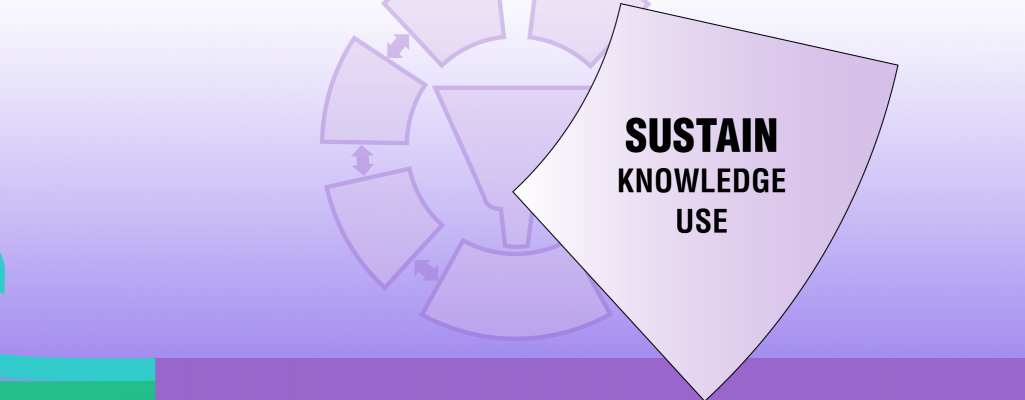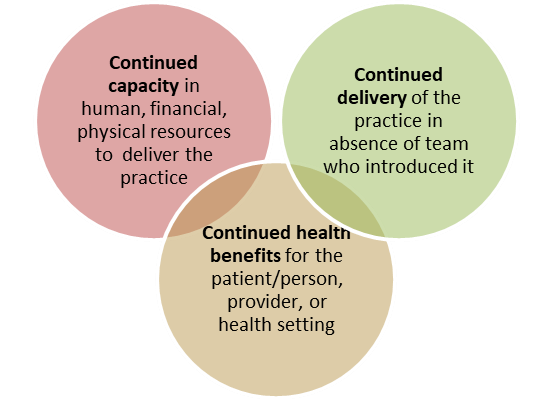

What is the phase 'Sustain Knowledge Use'?
Sustaining knowledge use, or in other words, sustaining the practice change that you and your team implemented, should be a key consideration when you are planning for and implementing a practice change (RNAO, 2012). Sustainability in an organization measures the extent to which an implemented practice is maintained within the organization’s ongoing, stable operations (Rabin & Brownson, 2017). Sustainability is observed when, after a defined period of time, the program, clinical intervention, individual (i.e., the health-care provider and/or the person/patient) behavior change, and/or system-level change is maintained.
Sometimes, the individual behaviour, program, or system-level change may evolve or adapt while continuing to produce benefits for the individuals, organizations, or systems (Moore et al., 2017); this is also a natural bi-product of the knowledge being sustained.
Other related terms
You might come across other terms that are related to or synonymous with sustainability. This includes: ‘routinization’, ‘institutionalization, ‘maintenance’ and ‘durability’, ‘incorporation’, and ‘integration’.
Why is the phase ‘Sustain Knowledge Use’ important?

The sustainability of practice changes is important to ensure the long-term quality of care for persons/patients. Without sustainability, significant investments of human and financial resources are wasted in the implementation of practice changes (RNAO, 2012; Fleiszer et al., 2015; Stirman et al., 2012).
- Interventions that are not sustained in the long term may result in worse patient outcomes than standard care. Failure to sustain these changes means that the intended improvements to care are short-lived and that human resources and economic investments to both the intervention and implementation efforts become squandered.
- Further, this is also detrimental to improvement efforts in the future, as staff, persons/patients and the public lose confidence and enthusiasm in improvement initiatives if sustainment of these initiatives is lost over a period of time.
- In the current climate of rising demands, shifting priorities and competition for resources, there is a need to understand how the sustainability of implemented initiatives can be influenced as change teams and other stakeholders want to ensure the long-term impact of their investments.
- Understanding these processes and determining how to foster the continuation of effective practices at a level that is sufficient to yield desired health outcomes is at least as important as understanding how to implement them in the first place.
SOURCES: Lennox et al., 2018; Stirman et al., 2012.
What does sustainability look like in practice?
Here are three main concepts that represent what sustainability looks like in a health-care setting (Urquhart et al., 2020). Think about how you and your change team can plan for these concepts when you plan for your practice change.

Remember: An effective sustainability plan involves planning early and identifying strong program champions to rally around the improvement, choosing a focus that fits with the organizational mission, and continually evaluating process and outcome measures.
